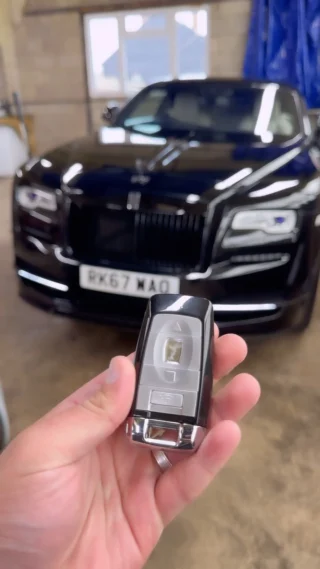Car Key Cutter: A Comprehensive Guide
In today's busy world, convenience is critical, specifically when it concerns our vehicles. Car keys are an important part of vehicle ownership, however they can easily be lost, damaged, or worn. This is where a car key cutter comes into play. A car key cutter is an essential tool that enables users to duplicate or cut new keys for their lorries. In please click the next web page , we will explore what car key cutters are, how they operate, their different types, and regularly asked concerns surrounding their usage.
What is a Car Key Cutter?
A car key cutter is a customized tool utilized to produce duplicates of vehicle keys or to develop brand-new keys from scratch. please click the next web page is attained by accurately cutting the metal or plastic key blank to match the initial key's shape and pattern. The advancement of sophisticated innovation in recent years has actually resulted in car key cutters being integrated into various machines that likewise incorporate programming for transponder keys and key fobs.
Key Components of a Car Key Cutter
- Key Blanks: These are uncut keys that can be shaped to match the initial key.
- Cutting Mechanism: This consists of blades or milling tools that cut the key.
- Guide Mechanism: A system that guarantees the key blank is located properly throughout cutting.
- Motor: Powers the cutting system.
- Control Panel: Used to select different key types and cutting settings.
Types of Car Key Cutters
Car key cutters can be found in numerous types, each customized for particular functions. Below, we offer an overview of the most common types:
1. Manual Key Cutters
These are traditional key-cutting tools that need the operator to physically direct the key blank through the cutter. While related internet page are simple to utilize, they demand ability and experience from the operator.
2. Automated Key Cutters
Automatic car key cutters utilize computer system systems to control the cutting procedure. They are much faster and more accurate, making them perfect for locksmith professionals and automotive service centers.
3. Laser Key Cutters
Laser key cutters make use of lasers to produce cuts with severe precision. They appropriate for high-security keys and are significantly popular in modern vehicle key production.
4. Transponder Key Programmers
These innovative devices not only cut keys but likewise program transponder chips embedded in key fobs, enabling for combination with the vehicle's immobilizer system.
How Car Key Cutters Work
The procedure of cutting a car key generally involves the following actions:
Step 1: Choose the Right Key Blank
Select a key blank that corresponds to the make and model of the vehicle.
Action 2: Position the Original Key
Clamp the original type in location to reference its shape or cut.
Step 3: Cut the Blank
Using the cutting mechanism, the maker will trace the profile of the initial key onto the blank, producing a duplicate.
Step 4: Program (if necessary)
If the key has a transponder chip, the final step involves programming the brand-new key to interact with the vehicle.
Benefits of Using a Car Key Cutter
- Convenience: Quickly duplicate keys without the requirement for long waits at dealers.
- Affordable: Generally more affordable than purchasing a brand-new key from a car dealership.
- Flexibility: Cuts a variety of keys including standard, transponder, laser-cut, and key fobs.
- Availability: Available at locksmiths, hardware stores, and some automotive centers.
Common Issues with Car Key Cutters
Car key cutting does not come without its challenges. Some typical issues include:
- Inaccurate Cuts: Poorly calibrated devices can result in keys that do not work.
- Complicated Programming: Key programming can fail if the device is not compatible with the vehicle's system.
- Wear and Tear: Over time, cutter blades may dull, affecting the quality of cuts.
Upkeep Tips for Car Key Cutters
To guarantee durability and efficiency of car key cutters, think about the following maintenance ideas:
- Regularly tidy the cutting locations to avoid accumulation of metal shavings.
- Examine the cutting blades for wear, and replace them as essential.
- Calibrate the device periodically to preserve cutting accuracy.
- Shop the maker in a dry environment to prevent rust.
Frequently Asked Questions About Car Key Cutters
1. Can I Cut a Car Key in your home?
- While it is technically possible, cutting a car key in your home needs the right tools and experience. It is a good idea to seek expert help.
2. Just how much Does It Cost to Cut a Car Key?
- The cost can differ commonly. Fundamental key duplicates may range from ₤ 1 to ₤ 10, while transponder keys can cost between ₤ 50 and ₤ 150 due to programming.
3. Are All Keys Duplicable?
- A lot of conventional keys can be duplicated, but some high-security keys and specific electronic keys may need customized equipment or authorization from the manufacturer.
4. What If My Key Is Damaged?
- Oftentimes, a knowledgeable locksmith can develop a brand-new key from a harmed one or repair it, offered there's sufficient product to deal with.
5. Will the Duplicate Key Work in addition to the Original?
- If cut accurately, a duplicate key should work just as well as the original. However, the quality of the key blank and the cutting procedure play considerable functions in its effectiveness.
Car key cutters are vital tools in the automotive industry, supplying important services to vehicle owners. Whether you need a duplicate key for extra use or to change a lost or harmed key, understanding the complexities of car key cutters can enhance your understanding about vehicle upkeep. With a variety of choices offered and advances in technology, car key cutting has actually become a more effective and exact process, making sure that people have access to the keys they require when they require them.

